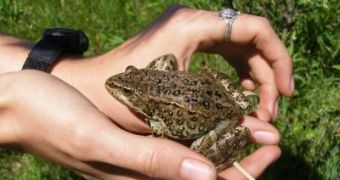The number of amphibious creatures in the ponds in Yellowstone Park is severely declining, Stanford scientists say. They place this phenomenon on global warming, which keeps drying up the fishless ponds that were the perfect habitat for frogs and salamanders to lay their eggs. New surveys showed that the number of lakes that can support the amphibians is now almost half of the one registered a decade ago.
The reason why amphibian populations are declining is simply because their eggs do not hatch. Because they are covered with a gelatinous layer, they dry up if they are removed from the water. And seeing how both salamanders and frogs lay their eggs close to the shorelines, it's easy to see how water evaporation, due to the heat, could diminish the water stretch, thus exposing the eggs to killer sun rays.
The situation of wetlands in Yellowstone is disastrous. "What were considered permanent bodies of water, meaning reference was given to them in the 1850s, '60s and '70s, and bestowed with a name as a lake, are now gone. Some wetlands that were considered permanent ponds are no longer there. Some lakes have become ephemeral," said John Varley, former chief scientist of the park.
There is little authorities can do to straighten this situation, which affects the entirety of the first national park. The disappearance of these lakes and ponds could mean a terrible disturbance in the balance of the whole ecosystem in the region, as the feeding habits of numerous species will be affected if frogs and salamanders go extinct and leave the food chain.
The main problem with the ponds drying is that they do so extremely fast, in a matter of days, thus rendering the populations unable to adapt to change. Larvae find it impossible to metamorphose and adults can't be fully aware of the danger, so as to leave the water. As such, each dried lake leaves hundreds of salamander and frog bodies behind, as a testament to the influence of global warming.

 14 DAY TRIAL //
14 DAY TRIAL //